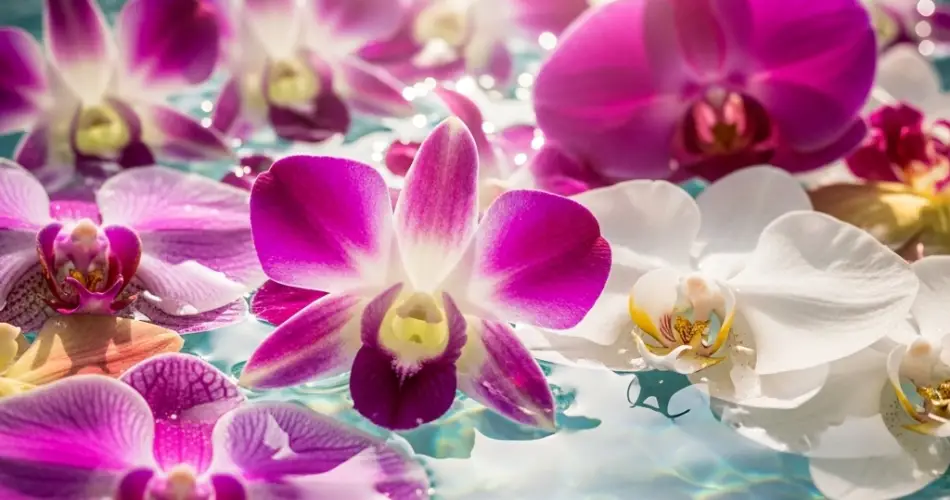Growing orchids in water might sound unusual, but it’s a real technique known as “water culture.” While most people associate orchids with bark, moss, or soil-like media, some orchid species can survive—and even thrive—with their roots suspended in water. This method is not traditional, but with the right approach and proper care, it can be a striking and low-maintenance way to grow these exotic plants.
Here’s everything you need to know about growing orchids in water, including which types to use, how to set up your system, and tips to keep your plant healthy and blooming.
Is Water Culture Suitable for Orchids?
Yes, but not for all species. Water culture works best with certain epiphytic orchids, especially:
These orchids naturally grow on trees in the wild, with their roots exposed to the air. Because they don’t rely on soil, they can adapt to growing in a water-based environment if transitioned properly.
Types of Water Culture
There are two main ways to grow orchids in water:
-
Full Water Culture (FWC) – The orchid’s roots are always in water.
-
Semi Water Culture (SWC) – The roots are kept in water for a few days, then allowed to dry for a few days in a repeating cycle.
Most growers find semi water culture safer for long-term health, as it reduces the risk of root rot and mimics the orchid’s natural cycle of moisture and drying.
How to Transition an Orchid to Water Culture
If your orchid is already potted in bark or moss, you’ll need to take a few careful steps to transition it to water:
-
Remove the Orchid from Its Pot
Gently take the orchid out of its existing container and remove all potting media. Rinse the roots thoroughly with lukewarm water to remove debris.
-
Trim Damaged Roots
Inspect the roots and trim away any mushy, black, or rotten areas. Healthy roots should be firm and green or silvery-white.
-
Choose a Suitable Container
Use a clear glass vase or jar. It should be tall enough to support the orchid but not so deep that it submerges the entire root system or crown. Proper air circulation is essential.
-
Add Water
-
For full water culture, fill the container so that the roots are partially submerged, but the base of the plant (crown) stays dry.
-
For semi water culture, place about 1–2 inches of water in the bottom. Every few days, change the water or remove it to let the roots dry out for 2–3 days before refilling.
-
Place in Bright, Indirect Light
Orchids in water still need light. Set the container near a bright window but away from direct sun that could overheat the water or scorch the leaves.
Ongoing Care for Orchids in Water
To keep your orchid thriving in water, follow these simple care guidelines:
1. Change the Water Regularly
Fresh water prevents algae growth and root rot. Change the water every 3–5 days. Use rainwater, distilled, or filtered water if your tap water is high in chlorine or minerals.
2. Watch the Roots
Healthy roots in water should stay firm and green when submerged. If they turn brown or mushy, remove the damaged parts and switch to semi water culture to allow more drying time.
3. Fertilize Sparingly
Orchids in water still need nutrients. Use a diluted orchid fertilizer (1/4 strength) every 2–4 weeks. Rinse the roots occasionally with clean water to avoid salt buildup.
4. Avoid Crown Rot
Never let water sit on the crown (the central part where leaves grow). This area is prone to rot if it stays wet. Keep it dry and above water level at all times.
Signs of Success in Water Culture
If done right, orchids in water will show:
-
New root growth
-
Firm, plump roots
-
Healthy, green leaves
-
Occasional blooms
Keep in mind that orchids grow slowly, and it may take weeks or months before they fully adapt to this method.
Challenges and Risks
Water culture is not without risks. The main concerns are:
-
Root rot from too much water
-
Nutrient deficiencies if not fertilized properly
-
Slower blooming cycles during transition periods
To minimize these issues, monitor the roots regularly and make adjustments based on your plant’s response. Many growers start with semi water culture and only move to full water culture if the orchid responds well.
Final Thoughts
Growing orchids in water is not just possible—it can be a visually striking and rewarding way to cultivate these elegant plants. With proper care, patience, and the right environment, your orchid can thrive without traditional potting media. It’s a fantastic option for minimalist plant lovers or anyone looking to try a unique growing method.
Just remember: start slowly, observe your plant’s response, and adjust your care routine accordingly. With time, your orchid can flourish in its new aquatic home.
